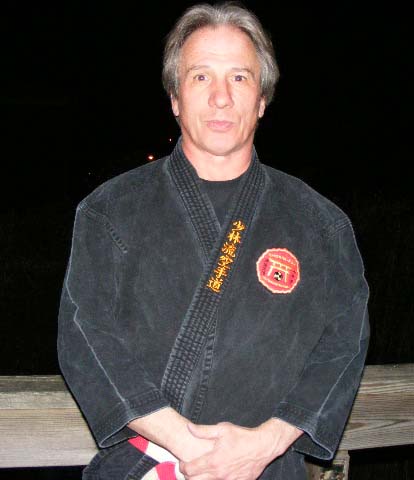
MARTIALFORCE.COM
PRESENTS
STEPHEN RITTERSPORN KYOSHI
AUG / 2014

The Journey of a Martial Artist
Riding A Wave Called Life
Interview by William Rivera Kyoshi
Edited by Lydia Alicea
Hello and welcome to Martialforce.com. My name is William Rivera, a Yudansha and student of Eddie Morales Hanshi.
I laughed aloud because it is not the first time I have heard this: “Wow, you remind me of Richard Gere!” This was exclaimed by Lydia’s niece as Stephen Rittersporn stepped out of the kitchen after finishing dinner at our home.
Stephen Rittersporn Kyoshi may bring to mind Richard Gere to some. For me, I have always related him to the character, Paladin from ‘Have Gun Will Travel,’ a Western television series that aired on CBS from 1957 to 1963. Paladin, a gunfighter, was suave, intelligent and debonair. Changing from his well-fitted suits to his black attire with gun and holster, he would convert into a gunslinger for hire. He was always ready for trouble, yet preferred not to respond with violence.
In the case of Stephen it is ‘Have Gi Will Travel.’ No, Stephen does not carry a gun in a custom holster as Paladin did, but he does have a black gi and when asked to demonstrate a weapons form, a sai or kama appears in his hand from his backpack. Rittersporn Kyoshi is riding a wave called life, and he travels throughout the world of martial arts ready to teach, and to learn.
Stephen Rittersporn Sensei has been involved in the martial arts for over thirty years In 1981, he moved to Shorin-ryu Karate where he currently holds the rank of Rokudan (sixth degree black belt) under Grand Master Eizo Shimabukuro - Okinawan Shorin Ryu Karatedo International Association (OSKIA). In 2009, Charles Bonét Hanshi - Shorin Kai International (SKI), promoted Sensei Rittersporn to Nanadan (seventh degree black belt). Sensei Rittersporn also holds the rank of Yondan (fourth degree black belt) in Eizan-Ryu Jujitsu under Felix Berrios Shihan.
Martialforce.com: Please tell us where were you born, and raised?
Stephen Rittersporn: “I was born at Lenox Hill Hospital in Manhattan. For the first eleven years, I was raised in Stuyvesant Town. Stuyvesant Town was created after World War II for veterans and their families to live. Today, you have to be pretty well off to live there. Later I lived in Inwood (top of Manhattan.), the Upper West Side, Downtown Brooklyn, and now I’m back on the Lower East Side.”
Martialforce.com: At what age did you tap into an interest in the martial arts, and what drew you?
Stephen Rittersporn: “As far back as my memory goes I was always into some form of combat. My older brother was five years older than I was. We were always playing Spartacus
(1960). ‘Those who about to die salute thee comes to mind.’ I was usually on the losing end of these games. Anyway, those bouts prepared me for public school. I was not the best fighter at age five or six, but I was used to being hit from someone that was much larger. At that time, my classmates could not really hurt me.
During my youth, I was an avid comic book reader. In the comic books, one would find the Joe Weider muscle ads, “Fear No Man; I will make you a Master of Chinese Kung Fu” ad, and the ever-popular Count Dante ads. These ads were humorous and interesting at the same time.
Batman was a television series based on the DC Comics character; that aired on TV from 1966 to 1968. During Batman’s second season, the Green Hornet and Kato, from their own TV show, made guest appearances in three episodes. In one of these episodes, Kato (Bruce Lee) mops the floor with Robin (Burt Ward). Bruce Lee did this with such ease and finesse. I knew at the moment that some day I would take up martial arts.”
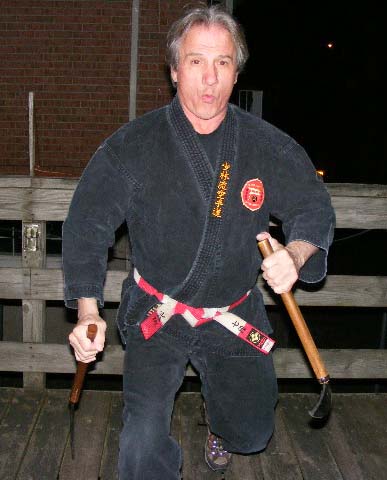
Martialforce.com: When did you begin studying the martial arts in a traditional setting?
Stephen Rittersporn: “When I was 18, my best friend Bo and I visited a dojo. This was Chaka Zulu’s Nisei Goju-ryu Karate dojo on 2nd Avenue near Saint Marks Place. The class was great. Seniors were helping Juniors. The techniques shown were very strong and precise.
At that time, I was not ready for Chaka Zulu’s hard training. I was busy taking care of my grand mother and trying to be a Comic Book Illustrator. I did not officially start Martial arts until the summer of 1979.”
Martialforce.com: Why did you decide to study/train the martial arts, and was there a time or transitional moment when the art became more than just an exercise?
Stephen Rittersporn: “During Junior High and High School, many of my friends were training in Gung Fu and Karate. They would show me some techniques. Their techniques always amazed me. I was a strong runt from playing roller and ice hockey as a kid. Every one of my friends that studied Martial arts could take me easily.
In 1979, when I was 23, I began my journey of studying martial arts after I graduated the School of Visual Arts on 23rd Street.”
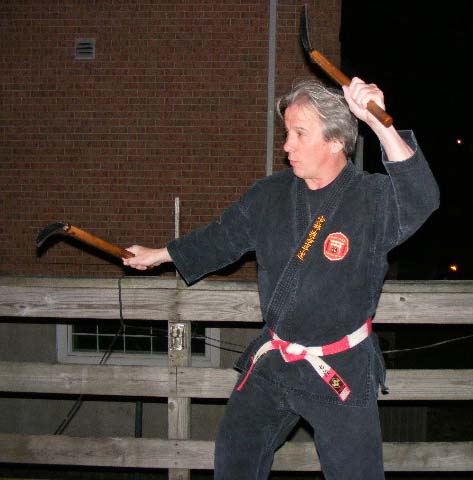
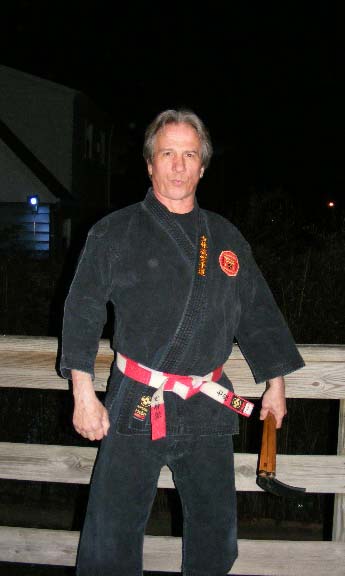
Martialforce.com: Who were your early influences?
Stephen Rittersporn: “I had many influences from artists to martial artists. Jack Kirby of Marvel Comics and Frank Frazetta (renowned sword and sorcery illustrator for Conan the Barbarian book covers) were my favorites artists at the time.
I have been truly blessed. My great teachers and friends like Grand Master Eizo Shimabukuro, Sensei Michael Blackhurst, Jerry Gould Hanshi, Charles Bonét Hanshi, Luis Fernandez Hanshi, Shihan Felix Berrios, and Shihan Maria Van Dessel have been great influences in my Martial Arts career and life.”
Martialforce.com: What martial arts have you studied?
Stephen Rittersporn: “Shotokan Karate, Judo, Okinawan Shorin-ryu (aka Shobayashi-ryu), and Eizan-ryu Jujitsu. I have been to several seminars throughout the years of my study of martial arts.”
Martialforce.com: Please tell us a little bit about each of your instructors, and their influence on your martial arts?
Stephen Rittersporn: “In 1979, a friend from work, Phil Rachelson, was studying Shotokan Karate on Kingsbridge Road. in the Bronx. Somehow, martial arts came up in a conversation and I wound up going to his Japanese Shotokan class. The Sensei’s name was Vincent Butta. He was great. He rather reminded me of (Marvel Comics) Daredevil’s teacher, Stick. He was very down to earth and practical. I had a great time there. After two years of studying Shotokan, my new work schedule at NYU prevented me from attending class at the dojo. I was Purple Belt at the time.
At NYU, Shiro Oishi was my Judo sensei. Shiro was cool. He loved ne waza (ground fighting). He is an actor and he has starred in several TV shows, and movies. He was a principle in the “Black Rain” movie.
Michael Blackhurst was a student from NYU’s Dental School. At that time, Sensei Michael Blackhurst was a Sandan under 10th Dan Grand Master, Eizo Shimabukuro of Okinawa.
Michael had formed a very large Shorin-ryu Karate (Shobayashi-ryu) class at the Dental School. Later he brought his class down to Coles Sports Facility. This class was not officially registered with NYU’s Coles Sports Facility. Our class met about two to three times a week. Every week our class got smaller and smaller, until it was Sensei Michael Blackhurst and I.
Eventually Michael Blackhurst stopped coming to Coles, so I went to Michael Blackhurst’s apartment in Stuyvesant Town. We trained at playground 6.
By this time, I was able to formulate an opinion about Shorin-ryu Karate and Martial Arts. The deep stances in Shotokan did not work for me. I was being hit hard in Shotokan class because I could not move out of the way. Shorin-ryu stances were more upright; this enabled me to have more maneuverability. Later I learned this was called Taisabaki.
In 1965, while I was training with Sensei Blackhurst, he would have me do a kata, have a shot of sake, or whiskey, and do the kata repeatedly. We would do this type of training for several hours at a time. The theory behind this unorthodox type of training was you are more likely to get into an altercation with someone when you are inebriated.
Michael Blackhurst had a great sense of humor, and his kata was very close in look, and feel to Grand Master Eizo Shimabukuro. He gave me great insight into Grand Master Eizo Shimabukuro’s idiosyncratic personality.
Sam Lewis, Sensei was a student of Master Peter Urban. Sam was a great fighter and he had excellent sweeps. He moved really well for a big man.
The great Scott Ashley is a very talented Matsubayashi-ryu (shorin-ryu) stylist. He has hands like Sugar Ray Leonard, and kicks like Bill Wallace on both sides. Sparring with him was very frustrating and painful. One day when we were sparring, I hit Scott with an overhand hand right that landed flush on his jaw. This type of punch has dropped many people. Scott just looked at me and said ‘ow.’ Scott used to do pushups on his jaw. I was never able to do that.
Jerry Gould of Kent Washington reminded me of the radio personality Wolf Man Jack. This man is a no nonsense practitioner of Shorin-ryu. His main teacher is none other than Grand Master Eizo Shimabukuro. Jerry Gould is well renowned for his Kobujitsu.
Felix Berrios Shihan is one the nicest people on the planet. His jujitsu is so precise, soft, and seemingly effortless. Felix does not have the grandiose facade that many people have. He is
down to earth and he loves questions that make him think. He is very good with people. I wish I had his knack of dealing with all sorts of personalities.
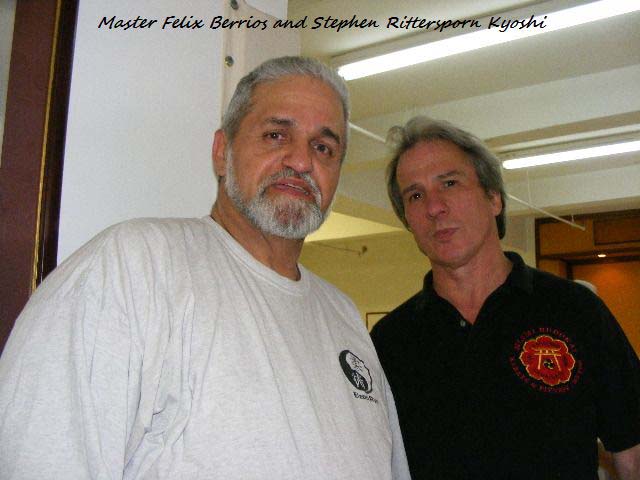
Felix Berrios trained with Sensei Raymond Duran. Sensei Duran was one of the unsung Goju Karate instructors in the New York area (Da Bronx) of the 1970's & 1980's. Sensei Duran was in the Air Force Military Police. Sensei Duran started training in Japan, he taught at Nisei Dojo, then at Waza Dojo (678 Morris Park Ave), which later became Yamato Dojo under Shihan Edward Kent Founder of Eizan Ryu Jujitsu Kai. Sensei Duran was a fine and patient teacher.
Sensei Duran is responsible for Eizan Ryu’s Jujitsu basic atemi kata. Shihan Kent asked Sensei Duran to help develop a kata, which we would teach to beginners; these students could learn proper atemi, blocking, kicking and stances. Eizan-ryu Jujitsu Kai still uses the same atemi kata and bunkai today. Later, Felix started his Bi-Wako dojo at 48 St. Marks Place on the Lower East Side. This dojo was there for over 25 years. Felix Berrios also trained under Professor Florendo Visitacion (AKA Prof Vee.)
Maria Van Dessel Shihan began practicing Eizan-ryu Jujitsu in 1981. She was drawn to waza, which allowed a smaller person to control a larger attacker. She trained at Biwa Ko Dojo under Shihan Felix Berrios, and was granted her black belt in 1987. Shortly thereafter, she began teaching at the dojo. In 1989, Sensei Maria began studying full contact karate under Soshu Shigeru Oyama. At Soshu Shigeru Oyama’s request, she taught a weekly jujitsu class at Headquarters Dojo from 1999 until the Dojo closed in 2004.
Later, Sensei Maria followed Shihan Jose Cotton and Shihan David Sheeger to Kanreikai Karate, and now teaches classes at the New York City Kanreikai Dojo. Sensei Maria currently holds the rank of fourth degree in Kanreikai Karate. She is also the chief instructor at the New York Eizan Ryu Jujitsu Dojo, and she holds the rank of (rokudan) sixth degree black belt in that art.
In the summer 1992, upon returning from my European vacation in France, I took the 6 train to Castle Hill to meet and train with the legendary Charles Bonét, Hanshi at his 1310 Unionport Road. Shorin-ryu dojo. On that same day, I had the privilege of meeting his star student Luis Fernandez, Hanshi of Miami Florida. Charles Bonét was, and is very intense. He likes you or he does not. There is nothing phony about him. He says what he means and he means what he says. He welcomed me to his dojo. He was willing to share his vast knowledge of Okinawan karate with me. It is thanks to Charles Bonét, Hanshi and Luis Fernandez, Hanshi that I met and trained with Grand Master Eizo Shimabukuro.
Grand Master Eizo Shimabukuro is a great teacher on the dojo floor. He is very patient. He explains things if you ask. I felt very comfortable asking questions about technique, history, and Okinawan culture. He is always willing to show you how to make your waza better. Since I am a gaijin, I had more latitude asking questions. Okinawan and Japanese etiquette might prevent some of the indigenous practitioners of budo from asking questions of their sensei.
Many high-ranking practitioners from the States and Europe have never asked their Sensei a question about Bunkai because they felt their questions would be looked upon as being disrespectful. I asked and I received. I had to Uke on many of these questions asked. Grand Master would say, ‘I fix, I show. Steban come over here.’’
Some people are more gifted than I am. I have to see technique and I have to feel the technique over, and over again. Others can see the technique and understand it. I am jealous of those practitioners.”
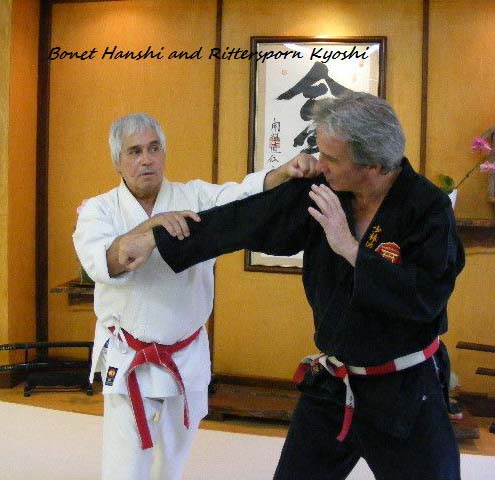
Martialforce.com: Please tell us about your classes, what were your thoughts that first week, month what were the classes like?
Stephen Rittersporn: “At the Bronx School of Shotokan Karate and Judo, training was hard. Their dojo at the time was located across the street from the Kingsbridge Armory. My first wife did not like it because I was always at the dojo. I never wanted to leave. I had a bad case of dojoitis. We stretched, did basic blocks, kicks, and punches up and down the floor, the kata we working on, and the last 30 – 45 minutes was free sparring. Sensei Butta would spar with every one in the class. Due to my job at NYU, I was unable to continue my study of Shotokan.
At the New York University’s Coles Sports Facility, I ran into Sensei Shiro Oishi. He saw me practicing Shotokan’s Heian Kata; and invited me down to his Judo class in the wrestling room. Sensei Oishi did a lot of shrimping and ne waza. Sometimes the workouts were so extreme that every muscle was in a state of spasm. Sensei Oishi enjoyed toying with me during randori. He liked to sit on my lungs during Ne waza. Oishi always told his students ‘throw him harder, he one tough sun of a gun.’ Shiro Oishi's students enjoyed having some fresh meat to abuse. Judo made me much stronger in the upper body. I was in Sensei Shiro Oishi Judo class on and off for about two years. I reached the green belt level in Judo.
One evening at New York University Coles Sports Center, I found this guy, Sensei Michael Blackhurst teaching thirty students from the NYU Dental School. I saw that this style of karate (Shorin-Ryu) was different from Shotokan. The stances were narrower and therefore more maneuverable. In addition, I noticed that their first kata, Seisan (Hangetsu in Shotokan) was far more advanced than the Heian kata that I knew. At that time, the Shobayashi branch of Shorin-ryu taught Seisan first. They did this to weed out the weak-minded students.
I was hooked, completely. I had to get into this class. At their next class, I was struggling with a new style of Karate. I was not the baddest, the strongest, nor was I the fastest. However, for some reason or another, class got smaller and smaller until it was me, and Sensei Blackhurst. Sensei Blackhurst helped make me the martial artist that I am today. Before leaving the New York area, Sensei Blackhurst tested me for Shodan.
After that, I became a martial arts gypsy. I was involved in Isshin-ryu under Sensei Tony Schiffano, USA Goju under Sensei Sam Lewis, and Matsubayashi Shorin-ryu with Sensei Scott Ashley. Soon after, I became Scott Ashley’s assistant instructor. Their class was doing very well; until Sensei Ashley pro kick boxing career took off. I went on vacation, came back and discovered that three people including myself were present on the floor. I asked, ‘where is everyone?’ Apparently, Sensei Ashley was sparring with too much contact for the civilians. I was not there to take the beating for them. Soon after, Sensei Ashley moved down to Miami Florida.
At New York University, Chris Jurak formed the Martial Arts Science Collective. I became their faculty advisor for this group. This group had people from several styles getting together and exchanging techniques. Our demos made NYU’s Tae Kwon Do class look bad. Due to politics with the NYU administration their group dissolved.
It was during this time I found myself at the Bi Wako (Eizan-Ryu Jujitsu) dojo for a Model Mugging graduation. Allison (a Model Mugging graduate) saw me practicing Shorin-ryu Karate at Coles; she invited me to their graduation. I arrived early and found the place to my liking. I have been there since.
I continued my studies of Okinawan Shorin-ryu Karate. I studied with Sensei Jerry Gould of Renton, Washington; he promoted me to Nidan on September 28th, 1990. October 1993 I finally meet and train with Grand Master Shimabukuro Eizo; he tested and promoted me to rank of Sandan (third degree black belt). I spent numerous days with Grand Master Eizo Shimabukuro. He was very concerned about the philosophy and historical lineage of Okinawan Shorin Karate. Grand Master Eizo Shimabukuro is very concerned about maintaining our kata purity. Do not change the kata. If you change kata, you change history.”
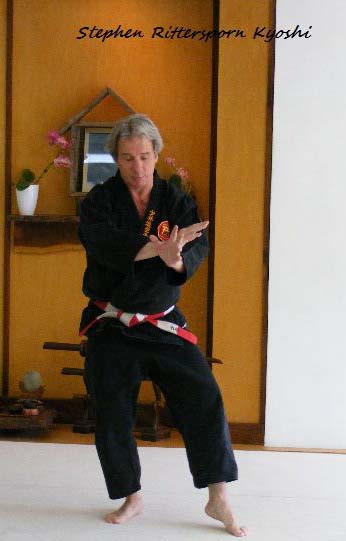
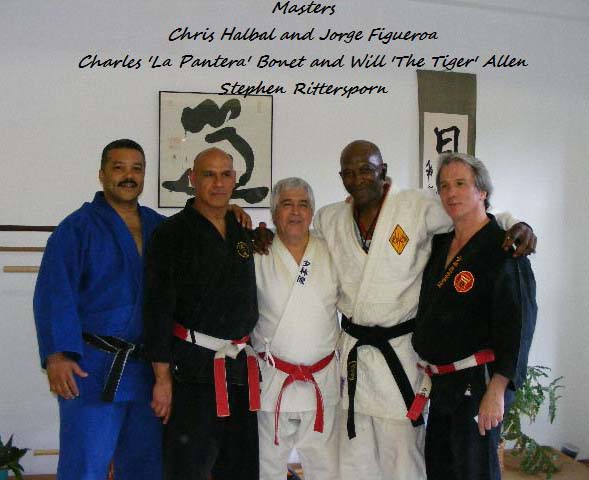
Martialforce.com: Did you participate in other sports in school?
Stephen Rittersporn: “During my youth, I participated in roller and ice hockey. Actually, my hockey background prepared me for the physical pounding that I have received throughout the years of Martial Arts. I was the runt on the ice. During this time, I was a fast ice skater. My multiples in Jujitsu remind me of my time on the ice.”
Martialforce.com: Please describe your shodan grading.
Stephen Rittersporn: “In the month of May 1985, I took my first shodan test in Okinawan Shorin-ryu Karate (shobayashi-ryu). It was very hot that day. The test took place in Stuyvesant Town at playground 6. I was barefoot on hot concrete. The test consisted of every kata in our system, sparring and Kobujitsu. During my performance of any kata, I was prepared to defend myself from seemingly random attacks. This happened throughout the test.
The test lasted over two hours. I was well prepared for any onslaught. After the exam was finished, I sat in seiza while Sensei Michael Blackhurst and another senior black belt reviewed my exam. I was not sure if I passed the exam. In what seemed like an eternity, with my body beginning to shut down, I was informed that I was now a Shodan in Okinawan Shorin-ryu Karate.
My Shodan training for Eizan-ryu Jujitsu consisted of me visiting Felix Berrios Shihan at his home in Staten Island. He would go over minute details of waza. I also went through the normal insanity that ones goes through like going to the gym, working with light weights, hanging upside down, hitting the heavy bag, sparring with anyone that moves.”
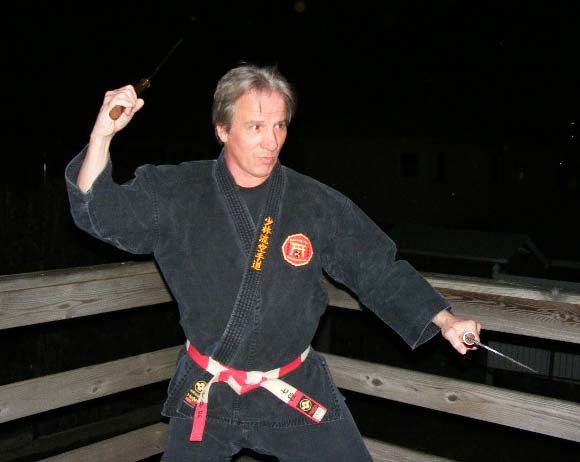
Martialforce.com: Are you a traditionalist, why do you think it is so important to practice and teach traditionally?
Stephen Rittersporn: “I believe I am a traditionalist. I believe in keeping the classical traditional kata as pure as possible. I think the teaching and learning aspects of budo are more detailed with the classical traditional point of view. Sometimes the tiny details are overlooked in modern sports oriented curriculums. At the same time when one has learned their kata, one should be able to take their waza that is derived from kata and adapt it in situations that are more realistic. If what I am teaching is not adaptable, then it is useless.
Tradition is very important. I teach all of the young students that. They have to know where Karate comes from. They have to know how to behave in a dojo setting. They must learn Japanese terminology.
Keeping your kata intact is most important. If you change the moves in your kata, you change the bunkai. Then you are reinterpreting history.
I have been to many dojos where the instructor has no idea where karate comes from. Sometimes the instructor does not know what style of Martial Arts they are teaching. The Martial Arts consumer should do their homework. We are in the business of teaching something that is priceless. Students must earn their respective rank. Every new rank has the burden of new responsibility. This is especially important for the younger students. This process will enable them to succeed in life.
It is highly improbable that someone is going attack you by going into zenkutsu dachi, gedan barai, and oi zuki towards your face (front stance, low block, and lunge punch). Yet, we use this basic attack as a teaching aid. How do you adapt your budo studies for ‘real life’ scenarios? It sounds cliché, but you must train your mind to expect the unexpected.
One needs a healthy amount of skepticism when one examines their kata. How do I make this work? Ask your Sensei questions. Think about what is being said, and shown. Many of the techniques are hidden in Asian Martial forms. They did this in order to keep their waza a secret. You have to keep your eyes and ears open.
I follow the “Medical School” way of teaching. See the waza (technique), do the waza, and teach the waza. I find this method to be the most efficient way of teaching. If someone has a better way of teaching, I am all ears.”
Martialforce.com: Would you recommend cross training in another form of Budo, and why?
Stephen Rittersporn: “I think cross training is great idea after brown belt. I believe the student needs a solid foundation before they branch off into other disciplines. My only requirement with students is to inform me that they are training with someone else. One reason is I cannot get out and train in everything; I want my student to come back and show me something I do not know. Another reason is I might know the other sensei. Some Instructors are not sane. For those instructors I would give my student a warning about their safety.
Why do I train in various arts, why not? This keeps me on my toes. It is important to occasionally step out of your comfort zone. I got into Eizan-ryu Jujitsu because it complimented my Okinawan Shorin-ryu karate.”
Martialforce.com: Would the different principles of the different arts promote confusion or conflict in the student?
Stephen Rittersporn: “I believe confusion and conflict happens because the student does not have a solid foundation in their art. Being confused occasionally is not always a negative state. This means you have to think about what you are doing. Why doesn’t this waza work for me? Is my stance correct? Am I breathing properly? Once you are able to spot the point of confusion, then you might be able to ask questions. Any decent instructor loves thought provoking questions.”
Martialforce.com: What has been the most difficult part of your training?
Stephen Rittersporn: “Injuries are always difficult. You want to train, but you cannot. You have to rest and heal. Without training, I become angry and irritated at innocent people (family members). They are so happy when I recover.”
Martialforce.com: What is the purpose of Kata, and is it applicable to current times?
Stephen Rittersporn: “Nothing is better than training with a real live human being. When it is not possible to get to the dojo, doing your kata is an excellent way to train. As most of us know, kata is much more than kick, block, and punch. Every move in kata can be interpreted in several ways. There are so many joint locks, pressure points and throws contained in the traditional Okinawan Karate Kata. Sometimes these things are difficult to see. This is a very good reason to see other Martial Artist practice their magic.”
Martialforce.com: How many kata are there in your school?
Stephen Rittersporn: “There are 19 unarmed kata, and five-kobujitsu kata, that we are required to know. We teach kids the Gekisai Sho and Gekisai Dai Ichi kata. In addition, I teach my Karate students a taisabaki kata from Eizan-ryu Jujitsu. In the beginning I teach movement first, and technique second. Later on movement and technique happen simultaneously.”
Martialforce.com: What is the source of the weapons training (kobudo)?
Stephen Rittersporn: “My Kobujitsu training comes directly from Grand Master Eizo Shimabukuro. Grand Master Shimabukuro’s Kobujitsu was influenced by Shinken Taira and his older brother Tatsuo Shimabukuro (he created Isshin-ryu Karate).
In Eizan-ryu Jujitsu, we practice Bokken, Jo, Hanbo, Club and some knife. The Bokken kata and Jo kata are based upon our Taisabaki kata. Those forms came from Edward Kent Shihan (creator of Eizan-ryu Jujitsu).”
Martialforce.com: At what stage do you teach students bunkai?
Stephen Rittersporn: “I start at white belt. Why do kata if you cannot use it? I believe Bruce Lee called Karate kata a classical mess. It is a mess because most practitioners have no idea of what they are doing. Most are practicing a mindless pattern for their next belt. Monkey see, monkey do comes to mind. Kata is an encyclopedia of waza. Kata is dynamic and exciting. I teach the pattern, eyes, breathing, kiai, stances (posture), tight and loose, basic bunkai, and finally oyo bunkai.”
Martialforce.com: How important is knowledge of bunkai?
Stephen Rittersporn: “Knowledge is everything. The more you know the better. It is important to know that you never stop learning. Every move in kata means something. I love Jujitsu because it compliments the Shorin-ryu Karate. Jujitsu has opened my eyes regarding the bunkai of the traditional classical kata that I practice.
I asked Grand Master Eizo Shimabukuro an intelligent question about bunkai. Everyone asks him about bunkai. Grand Master Eizo Shimabukuro will show you good form and posture, breathing, eyes, etc. These basic application (bunkai) from kata will be enough information to get you killed. I asked him about the Oyo Bunkai (real application) from the various kata in our curriculum. This in depth type of work was very similar to the Jujitsu that I studied. The Okinawans call this Tuite. Tuite consists of Joint locks and throws. The Oyo Bunkai consists of Kyusho (pressure points) and Tuite.
It is instructive to watch You Tube videos of Kyuzo Mifune's dancing magic, Isao Okano and Toshihiko Koga's amazing athleticism, and Masahiko Kimura’s simple, polished fighting technique, and consider that they are all central to judo. If someone tells you “oh no, that’s not real judo, aikido, karate, or jujitsu” – there is a tremendous chance they are displaying ignorance. The martial arts are vast.
When observing technique demonstrated, try to feel both; what it is like to do the technique, and what it is like to have the technique done to. This is a shrewd way of learning technique, and, equally essential, it is practice in reading bodies. Reading people's feelings off their bodies is useful both for defeating people and for taking care of them.
Many people in and out of the martial arts have dismissed the usefulness of kata (martial art forms). To many people these forms are means of going up in belt rank and nothing more. I respectfully disagree. These forms are much than a means of going up in rank.
These forms are an encyclopedia of technique (waza). In my humble opinion, kata is a reference point of basic techniques. One has to go back to the basic. For mastery of your art, you need a solid foundation of basics. Without a solid foundation, the building falls down and crumbles.
In kata, I like the trapping and entries that flow from one technique into another technique. Kata is great because you can always practice when you are unable to get to your martial arts class. Believe me, your Sensei can tell who is practicing on their own. The trick is to know your kata (forms) inside out. This way, you have no excuse not to practice.”
Martialforce.com: Is it important as a teacher to study another style of Martial Art or to concentrate on their chosen style?
Stephen Rittersporn: “It important to be honest with yourself. Sometimes you have to go out and study with other people. This could entail studying another style. Sometimes you need a fresh eye. If you are not learning, you are stagnating. When you go visiting other schools, it is possible you will find a deeper understanding of what you are doing. I know this is a strange dichotomy because I really do concentrate on Okinawan Shorin-ryu Karate. As a teacher, I never want to stop learning. This approach keeps me renewed and invigorated.
I believe you should be confident about your dojo, ryu-ha, style(s) that you have studied. My core study in Budo is Okinawan Shorin-ryu under Grand Master Eizo Shimabukuro. My kata and waza compares rather nicely with practitioners of Okinawan Shorin-ryu in North America, Europe and Okinawa. One can recognize who my teachers are by my waza.
At the same time, one can see that my personal in depth study of myself has created my own unique way of doing things. I am not interested in creating my style. I like what I am doing, but I am not closed to other people’s ideas. After many years of study, people call me Sensei. That does not mean that I am the all knowing all seeing sage of wisdom. Quite the contrary, I learn from every beginning student, and high-ranking sensei alike. I do not have anything against other styles of study. I chose the styles that go to my strengths. Other people will choose other styles to study and that is great.”
Martialforce.com: How does Eizan Ryu Jujitsu differ from other styles of Jujitsu?
Stephen Rittersporn: “Eizan-Ryu Jujitsu is jujitsu for inner-city self-defense. It is self-defense for civilians; they emphasize escape and control. It is for self-defense, not fighting, so most of their practice is defensive, not aggressive. It is for use on city streets, bars, clubs and subways. Eizan-ryu emphasizes footwork (Tai-Sabaki), which works best on smooth surfaces; stunning attackers by throwing and taking them down hard, which works best on hard surfaces; and staying on one’s feet, which is the place to be when on a hard surface and surrounded by strangers.
Eizan-ryu Jujitsu highlights techniques for bringing attackers off balance while maintaining their own balance. They do this more than stressing physical improvement. Eizan-ryu has this approach because the genetic limitations on technique (waza) and balance (kazushi) are not as limiting as those of size, and strength. However, they do work on acquiring fit, flexible bodies.
Many people today are studying Brazilian Ju Jitsu (BJJ). They are great on the ground. They are very successful one on one with no weapons. BJJ is very successful as a sport. BJJ, Judo, Sambo, catch wrestling are very successful ways of dealing with the ground. However, it is rare that someone is going to attack you one on one with no weapons.
Never the less, it is important to have some experience with the ground. I will not throw myself on my back. If I am knocked to the ground, I have some Ne waza from Judo.”
“Sometimes the instructor is a great martial artist. However, not every great martial artist is a great teacher. Teaching skills take time to hone and develop.”
Martialforce.com: Does your style include grappling, restraining, and throwing techniques?
Stephen Rittersporn: “Yes, in Okinawan Shorin-ryu Karate every throw is called a dump. Wanshu Kata has a throw that looks a lot like Judo and Jujitsu’s kata gurma. See link below:
https://www.youtube.com/watch?v=ES0KjYQJzJs
Naihanchi Shodan from Grand Master Eizo Shimabukuro’s curriculum is my favorite kata. If you understand this kata, you should be able to defend yourself. This kata has sweeps, throws, several joint locks, and devastating strikes. Eizan-ryu Jujitsu uses the 65 throws of Kodokan Judo. Eizan-ryu Jujitsu utilizes many joint locks, and restraints.”
Was there anything in particular that converted you to various styles, or did you not convert more added what was lacking?
Stephen Rittersporn: “I believe I am riding a wave called life. Sometimes one’s control over your destiny isn’t foolproof. One has to learn how to go with the flow. If I kept my job at United Artist Music I might still be doing Shotokan karate. For the forseeable future I will continue to train in both Shorin-ryu Karate and Eizan-ryu Jujitsu. I don’t believe I’m adding anything new to these styles. My understanding of myself, my body, structure, and breathing have increased throughout the years. I know it’s human nature to believe that you’ve invented or created something new. In most cases you haven’t done anything new; the waza was starring you in your face all the time.”
Martialforce.com: What motivates you to be in Martial Arts all these years?
Stephen Rittersporn: “I love it. Everyday, the martial arts challenges me to be better than I was yesterday. Ocassionally I have a minor satori on a waza and what it all means. My motivation goes towards my students who will cary the torch way into future, long after I am gone.”
Martialforce.com: Have you ever wanted to give up Karate?
Stephen Rittersporn: “24 years ago, during an outdoor workout in Staten Island I shattered my L5 disk. At that time I was in pretty good shape. I felt a sharp unfamiliar pain after I took a break fall and landed on a small pebble. It was only pain. I thought my conditioning would overcome this. For over 18 months, I trained and walked around in this condition. Eventually it got so bad that I could not sleep, train, or do anything. I did everything under the sun not to have surgery. I had several acupuncture treatments for my condition; this did not help. Finally, I gave into the idea of having back surgery. I had back surgery at the Cornell Medical Center in NYC. I was on the table for six and half hours. Doctors told me that I might have to give up my martial arts training.
I felt much better after the surgery. I did not go to any dojo for six months. I did not spar, do any rolls, handsprings, or anything that would jar my spine. I went to PT twice. Even with insurance, I could not afford the PT. Since I knew how to stretch and get back in shape, I took that responsibility and ran with it. I practiced my kicks and kata at NYU Coles Sports facility’s swimming pool. Six months later, I came back to Eizan-ryu Jujitsu in great shape. I had to adjust my technique. I became softer in my approach towards martial arts. Before that, I was more ballistic.”
Martialforce.com: What is the worst thing about karate today in your opinion?
Stephen Rittersporn: “In the New York City area, I think petty bickering, and complaints about other martial artist and styles are the worst thing about karate. Some of us sound like old ladies. Personally, I do not have the time for such nonsense.”
Martialforce.com: What is the best thing about karate today in your opinion?
Stephen Rittersporn: “The best thing in Karate today, are those unsung heroes who teach Martial Arts day in and day out without complaint, or without the financial reward they so richly deserve. Their main goal in life is to put out into the world champions of life.”
Martialforce.com: Is there anything you would do differently if you were starting Martial Arts today?
Stephen Rittersporn: “I would assume that I would be starting as a young man. I would probably go into MMA. Young strong people love competition.”
I am available to teach seminars on the following:
Okinawan Shorin-ryu Karate (kata, oyo bunkai, tuite, etc.)
Eizan-ryu Jujitsu (Judo throws, Ukemi, defense from knife and club,
multiples, wall techniques, sitting in chair, etc…)
Kobujitsu, Sai, Bo, Kama, and Tonfa
Children’s and Women’s self defense
I can be reached at the following:
Stephen Rittersporn, Sensei
New York, NY 10009
http://www.shorinkaiinternational.com
https://www.facebook.com/stephen.rittersporn
http://www.youtube.com/user/srittersporn/videos
On behalf of Martialforce.com, thank you Stephen Rittersporn Kyoshi for the opportunity in presenting this interview.
To Martialforce.com